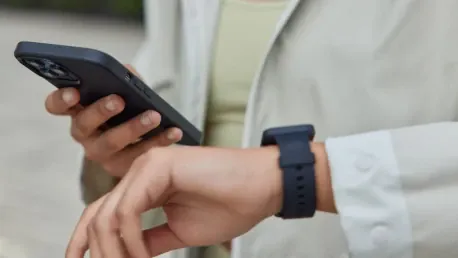The realm of wearable technology has dramatically transformed over the past decades, evolving from simple step-counters to sophisticated health-monitoring devices. As technology continues to advance at a rapid rate, the implications for health and everyday life are profound and far-reaching. This article explores how wearable tech is poised to revolutionize various aspects of our daily routines and healthcare systems.
Evolution and Popularity of Wearable Devices
Wearable technology initially gained popularity with fitness trackers like Fitbit and Garmin. These early devices primarily focused on counting steps, encouraging users to stay active and achieve personal health goals. Simple yet effective, they inspired a generation to move more and be mindful of their physical activity levels.
Over time, the capabilities of these devices expanded significantly. Modern fitness trackers and smartwatches now feature heart rate monitoring, sleep tracking, and blood oxygen level detection, establishing themselves as essential health tools. The integration of advanced sensors and sophisticated algorithms has transformed these gadgets into indispensable companions for health-conscious individuals. As these devices become more affordable and accessible, their adoption continues to rise, making them an integral part of everyday health management.
Smartwatches: Beyond Notifications
Smartwatches, such as the Apple Watch and Samsung Galaxy Watch, have built upon the foundation laid by fitness trackers. They offer smartphone functionalities, including notifications, calls, and even apps for various tasks, making them convenient extensions of our mobile devices. This seamless integration into daily life ensures that smartwatches are not only tools for communication but also vital aids in health and productivity.
These devices are also equipped with advanced health sensors like ECG and fall detection, making them crucial for monitoring personal health and potentially saving lives in emergencies. Users can now track irregular heart rhythms, receive alerts about concerning health patterns, and share this data with healthcare providers for better-informed medical decisions. This fusion of technology and health monitoring underscores the potential of wearables to provide timely interventions and preventatively manage health conditions.
Smart Glasses and Augmented Reality
The integration of augmented reality (AR) with wearable tech has led to the development of smart glasses. While early iterations like Google Glass faced challenges, current models from companies like Microsoft and Meta are more promising and sophisticated. The latest advancements enable smart glasses to blend seamlessly into both professional and daily settings, overcoming the limitations of their predecessors.
Smart glasses can overlay digital information onto the real world, providing users with navigation directions, notifications, and even language translation in real time. This functionality is transformative for various industries, including logistics, education, and healthcare, where instant access to critical information can enhance efficiency and accuracy. The potential for smart glasses in enhancing both work and daily activities continues to grow, with future iterations likely offering even more immersive and intuitive user experiences.
Transformative Impact of Smart Clothing
Smart clothing represents a significant leap in wearable technology, embedding sensors and functionalities into garments. Brands like Under Armour and Adidas are leading this innovation, offering clothes that can track muscle movement, posture, and hydration, providing athletes and fitness enthusiasts with detailed physiological data to improve performance and prevent injuries.
Additionally, some smart garments include temperature-regulating fabrics and embedded ECG sensors, catering not only to athletes but also to individuals with chronic health conditions. These advancements in smart clothing extend the benefits of wearable tech to new realms, enabling continuous health monitoring in a non-invasive and comfortable manner. As the technology matures, smart clothing could become standard attire, blending fashion with function and health.
Healthcare Revolution: Remote Monitoring
Wearable technology is making a substantial impact on healthcare by enabling remote patient monitoring. Devices like continuous glucose monitors (CGMs) provide real-time data, improving diabetes management and allowing for proactive intervention. The ability to track glucose levels continuously has transformed the daily lives of diabetic patients, reducing the need for frequent finger pricks and providing more accurate insights into their health.
Wearables also include sensors for mental health monitoring, detecting stress levels through electrodermal activity (EDA) and offering guided breathing exercises, thereby enhancing overall mental well-being. These innovations are pivotal in managing chronic conditions and improving quality of life. The future of healthcare wearables is promising, with potential developments including non-invasive blood tests and early detection of diseases, making continuous health monitoring more comprehensive and accessible.
Advanced Wearables and Future Prospects
Future advancements in wearable tech are geared towards even more sophisticated health monitoring. For example, smart patches may soon analyze sweat composition for early detection of dehydration, infection, or vitamin deficiencies. This kind of non-invasive monitoring has the potential to provide critical health data without disrupting daily activities, making it easier for users to maintain optimal health.
Wearables with advanced biosensors hold the potential to detect diseases early on, drastically altering the landscape of preventive healthcare. These devices could monitor a wide range of biomarkers, providing early warnings for conditions like cardiovascular diseases, cancers, and metabolic disorders. The early detection and continuous monitoring capabilities of advanced wearables promise a future where proactive health management becomes the norm, reducing the burden on traditional healthcare systems.
Role of AI and Machine Learning
The integration of artificial intelligence (AI) and machine learning in wearable tech is paving the way for personalized user experiences. AI-powered wearables can offer tailored workout recommendations and alert users to irregular heart rhythms based on their individual health data. This ability to provide bespoke health advice and interventions enhances the effectiveness of wearable devices, making them indispensable tools for users.
As these devices collect extensive data over time, they can learn and adapt, potentially transforming into proactive health assistants that provide real-time advice and interventions. The combination of AI and wearable tech represents a significant advancement in personalized healthcare, enabling users to receive timely and accurate health advice based on their unique needs and conditions. The potential applications of AI in wearable tech are vast, ranging from mental health support to chronic disease management.
Privacy and Security Concerns
The collection of sensitive health data by wearables raises crucial privacy and security issues. Ensuring the protection of user data requires strong encryption and robust security protocols to prevent unauthorized access. As wearable devices become more sophisticated and collect more detailed health information, the importance of stringent data security measures cannot be overstated.
Regulatory bodies like the FDA and GDPR are establishing guidelines to safeguard user data while balancing the need for innovation in the wearable tech industry. These regulations aim to ensure that the benefits of wearable technology are realized without compromising user privacy. As wearable tech continues to evolve, the focus on data security will remain paramount, necessitating ongoing efforts to develop and implement effective protection measures.
A New Age of Connectivity and Health
The world of wearable technology has seen a remarkable transformation over the past decades. Initially, these devices were simple step counters, but they have now evolved into advanced gadgets capable of monitoring various health parameters. As technology continues to progress at a rapid pace, the impacts on our health and daily lives are significant and wide-reaching. This article delves into the ways wearable tech is set to revolutionize different facets of our daily routines and healthcare systems.
Wearable technology now includes smartwatches, fitness trackers, and even smart clothing that can monitor heart rates, track physical activity, and measure sleep patterns. These devices provide real-time data, enabling users to make informed health decisions and triggering early warnings for potential health issues. Furthermore, integrating wearable tech with healthcare systems allows for remote patient monitoring, reducing the need for frequent doctor visits and enabling better management of chronic conditions.
As wearable technology continues to innovate, it holds the promise of making our lives healthier and more efficient, showcasing the profound impact it will have on our future.









